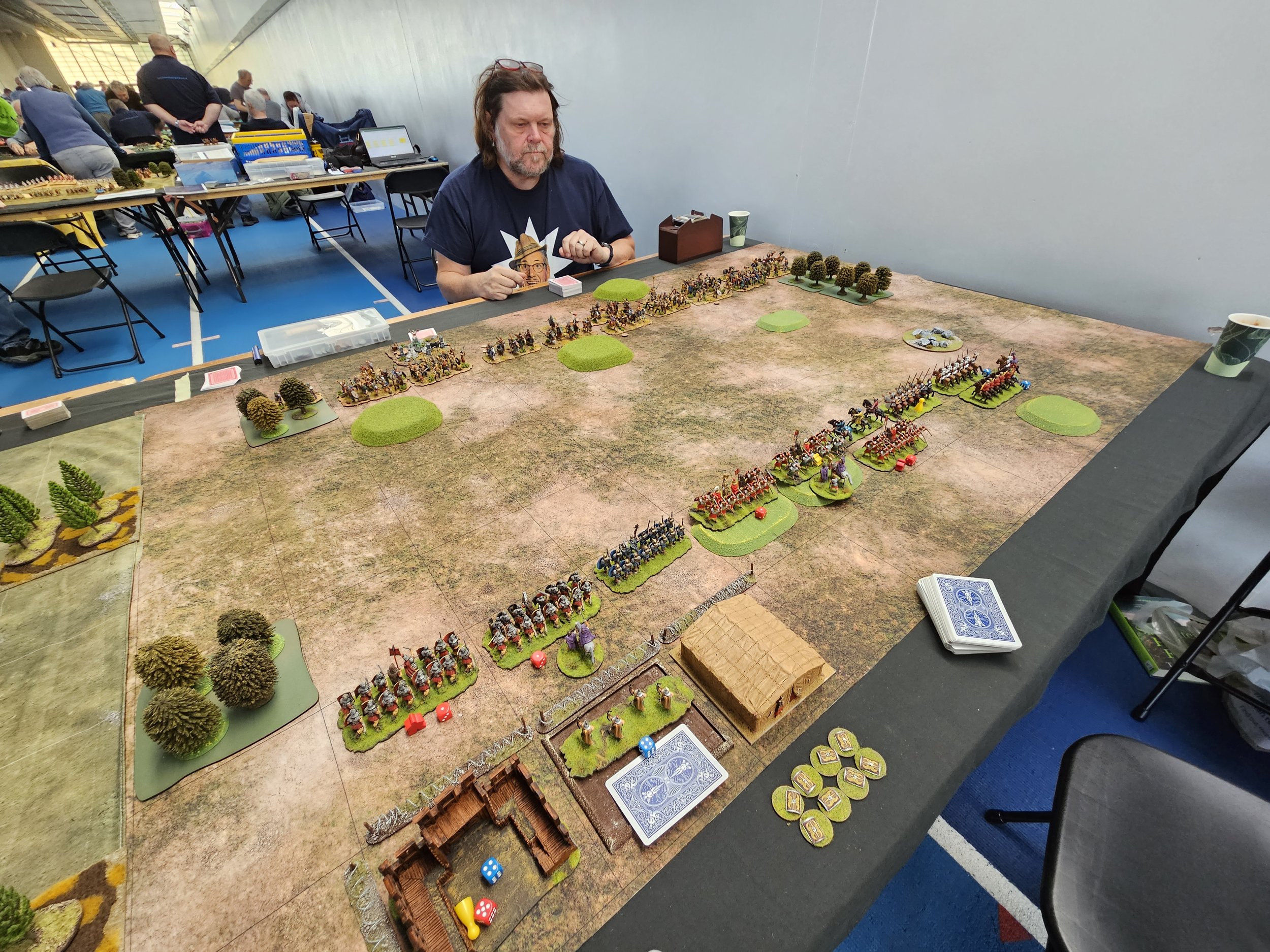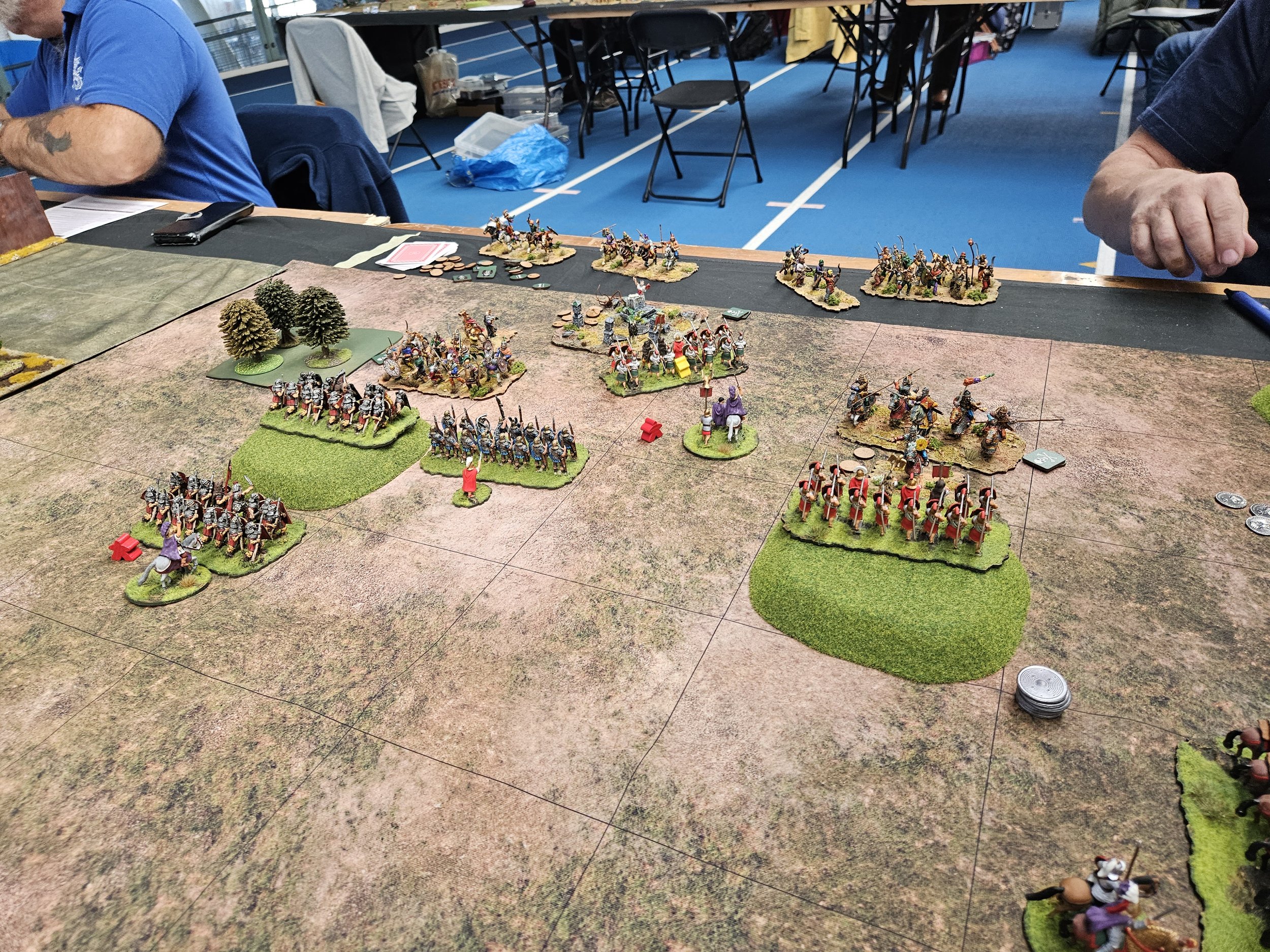Two the Strongest Tournament: Game Two
/Peter and I’s second game at the inaugural Two the Strongest Doubles tournament organised by the London Guild of Wargames was against Tom and Nathanial, each fielding a Wars of the Roses army: lots of longbows, billmen and knights!
Our plan was very much the same as in the first game of the tournament. My solid legionaries would hold the bulk of the enemy in place whilst Peter’s lighter cavalry got around the enemy flank and rolled them up. As our opponents wavered at the sight of their flank collapsing, in would go my Roman mincing machine to finish them off.
Much to our surprise, the first stages of the game saw everything going to the plan: Peter’s men got around the right flank of Tom’s troops and started knocking units off the table, then turning to head into the centre. Meanwhile, I advanced cautiously forward, wary of a storm of longbow fire.
Nathaniel also took a cautious approach so, for a time, all the action was on one side. Here’s a montage of these first evolutions:
Then I’m afarid our opponents made what must be considered a fateful mistake.
Concerned about their right flank, they turned some of their units in the centre to the right, intending to take Peter’s legionaries, now heavily engaged with the right side of the enemy line, in the flank. This, of course, left them open to a rapid advance from my troops into their now-exposed left sides, knocking a couple off the table and certainly preventing them intervening to the right as Tom had planned.
At this point Tom’s half of their army collapsed, leading to all his remaining troops being removed from the board and leaving Nathaniel to face the might of the Empire alone!
Now severely outnumbered and already in a poor tactical situation, it was only a matter of time before Nathaniel’s troops were overwhelmed. It also didn’t help that his artillery now showed an alarming propensity to draw Aces!
So in all a fairly convincing 16-0 victory for the Romans, leaving us in a good position overall as we faced the final game of the day.






























































































